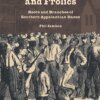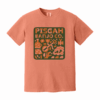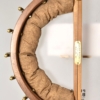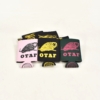General INFORMATION
Ordering
Orders require a $250 non-refundable deposit with full balance due upon completion of the banjo.
All orders require an approximate 2-6 month estimated wait. Wait time is estimated and is not guaranteed, but please know we are working as quickly as possible to complete your build. Your patience is appreciated.
All shipping cost will be determined upon completion. International shipments may require additional taxes. A case is required for shipping.
Local pick up is available. Orders shipping in NC may be subject to state taxes. International orders may require VAT and/or other duties and taxes.
Warranty
All banjos come with a limited lifetime warranty to the original owner for material workmanship on all wooden components not including the bridge or fingerboard. The lifetime warranty does not cover the finish, normal wear and tear, and truss rod/setup adjustments. All metal components come with a limited 1 year warranty.
All warranty claims are up to the discretion of Pisgah Banjo Company.
Shipping on warranty claims, tune-ups, or repair work will be the responsibility of the banjo owner. If determined there any material workmanship issues, either a return shipping label will be issued or partial shipping costs will be refunded after inspected by PBCO to be determined a warranty issue and at the discretion of PBCO. Any repair work not covered under the warranty can be completed at the cost of $65 per hour for labor plus materials.
REGISTER YOUR BANJOS’S WARRANTY HERE
Shop Tours
We offer tours of our facility by appointment and during business hours, Monday – Friday, 9 am – 5 pm. We are not open on Saturday or Sunday. Please reach out by email to support@pisgahbanjos.com to schedule a tour!
CARE & MAINTENANCE
Head Tightening
Every banjo player should be able to adjust their head tension, much like a percussionist must be able to adjust their drums before performing. Each Pisgah banjo head is tightened to exacting specification, however after a month or two break in period, the head may need to be tightened. PBCO recommends a head tension range between 85 – 93 lbs. Banjo head tension is a very subjective topic, however you generally want a tight head with roughly 1/16″ head deflection at the bridge. This means if you lay a straight edge across the head, there should be a 1/16″ depression at the bridge with the string tension on. If there is more than 1/16″ deflection, the strings may be too low along the fingerboard or you may not get enough volume coming from the instrument. A 5/16″ deep well socket banjo adjusting tool is required for tightening. Start by tightening each nut a quarter turn all the way around the head. You can go clockwise or counter clockwise and it is NOT necessary to tighten opposite nuts. Simply make sure there are no loose nuts before playing again.
String Care
We use PBCO clawhammer banjo strings on every banjo. They are a medium gauge set with a phosphor bronze wound fourth string. Replace your strings every 2-4 months, depending on how much you play. If the strings show signs of rust, replace right away! Also remember to wipe down your strings after every time you play and this will make your strings last much longer.
Cleaning
Keep a clean cotton rag in your case and wipe down the strings, neck, and hardware each time after playing. If the fingerboard gets dirty, you can remove the dirt with a mild cleaner, or rub it with 0000 steel wool. For persimmon fingerboards, rub some tung or lemon oil after cleaning. Bee Good All Natural Fretboard Oil can also be used. A good rule is to do this every time you put new strings on. This will keep the fingerboard from drying out and keep it look new.
Truss Rod
Every Pisgah Banjo comes with a two way adjustable truss rod and is accessed at the heel of the banjo. The neck must be removed from the rim to access the rod. A 9/64″ T handle Allen wrench is required to adjust the truss rod. THE TRUSS ROD DOES NOT ADJUST THE ACTION. If you are looking to change the action, try a taller or shorter bridge. If there is too much neck relief, or back bow, please take the banjo to a trusted luthier or repair shop, or send back to Pisgah Banjos and we can easily make this adjustment for you. Remember to keep your banjo out of the sun and away from heat sources in your house. Also remember to take your banjo out of your car every time and never leave it over night or in the hot sun.
Nut Width
The neck width at the nut is 1 and 5/16″ on our 5-string banjos. 5/6 String banjos have a nut width at the neck of 1 and 5/8″.
Tonal Variation
Tone Wood
Walnut: Lighter in weight, darker in tone. More pores than maple and cherry, walnut is better for mellow and plunky tones
Cherry: Denser in weight to walnut yet more pores than maple, this is a perfect “in between” tone wood. Cherry when new looks salmon colored however will darken with age, sunlight, and use.
Maple: Light in color, heavier in weight. Denser than walnut and cherry. Perfect for folks who want a brighter tone.
Tone Ring
Disclaimer: Tone and tone rings are a personal preference and there is no “ideal” sound in the banjo world. Quality banjo construction and materials along with technique and style play a large roll in a tone in addition to the tone ring. All banjos we build sound like banjos regardless of the tone ring.
Persimmon: Gives a warm and mellow tone. Can produce a plunky or minstrel sound if combined with a goat skin head. We suggest pairing with 12″ rim for best tone. Cannot be removed.
Rolled Brass: Classic old-time tone. Clear and clean, this ring can be heard well and has good responsiveness. Cannot be removed.
Dobson: Good sustain and resonance. Very responsive and a long tone decay. Great for any old-time banjo style. Can be removed and the head can sit directly on the wood rim for a very plunky tone.
Electric / White Laydie: A historic tone ring the produces more volume and has good attack and responsiveness. “Electrifies” the tone, sounding like your banjo is amplified. Electric is the correct name for this ring where as White Laydie refers to a specific banjo model produced by Vega which had no stain and came with a clear finish with the maple looking “white”.
Tubaphone: Amplified volume much like the Electric but with more tubbiness. Good sustain and responsiveness, with longer decay in tone.
Little Wonder: Spun brass sleeve with a rolled brass tone ring. Warm tone, punchy, good sustain, responsive.
No tone ring (Metal Clad Rims only): If you decided not to get a Dobson tone ring on your metal clad rim, the head will sit directly on the rolled edge of the rim and will be similar in tone to a rolled brass tone ring.
Head Material
Renaissance heads produce clean and clear tones. Very responsive and the best resonance. They are typically louder than Fiberskyn and Goat.
Fiberskyn heads are plunky and mellow and resemble the look and tone of goat skin but with less maintenance and no changes with humidity and weather.
Goat skin heads are thicker and even plunkier than Fiberskyn. These require you to change the tension with with change in humidity and weather however produce a very traditional tone that you can only get with a real skin head.
___________________________________________________________________________________________________
When was my banjo built?
Every banjo we build has a serial number engraved on the dowel stick. Use the list below to determine the approximate build date of your banjo. Please note, earlier serial numbers will be marked “Patrick Heavner Maker”
0-25: 2005 – 2011
26-81: 2012
82-203: 2013
204-393: 2014
394-564: 2015
565-830: 2016
831-1018: 2017
1019-1355: 2018
1356-1593: 2019
1594-1810: 2020
1811 – 2400: 2021/2022
2401 to 2690: 2023
2691 or higher : 2024
Please note, build dates per this list are approximate and may vary.





